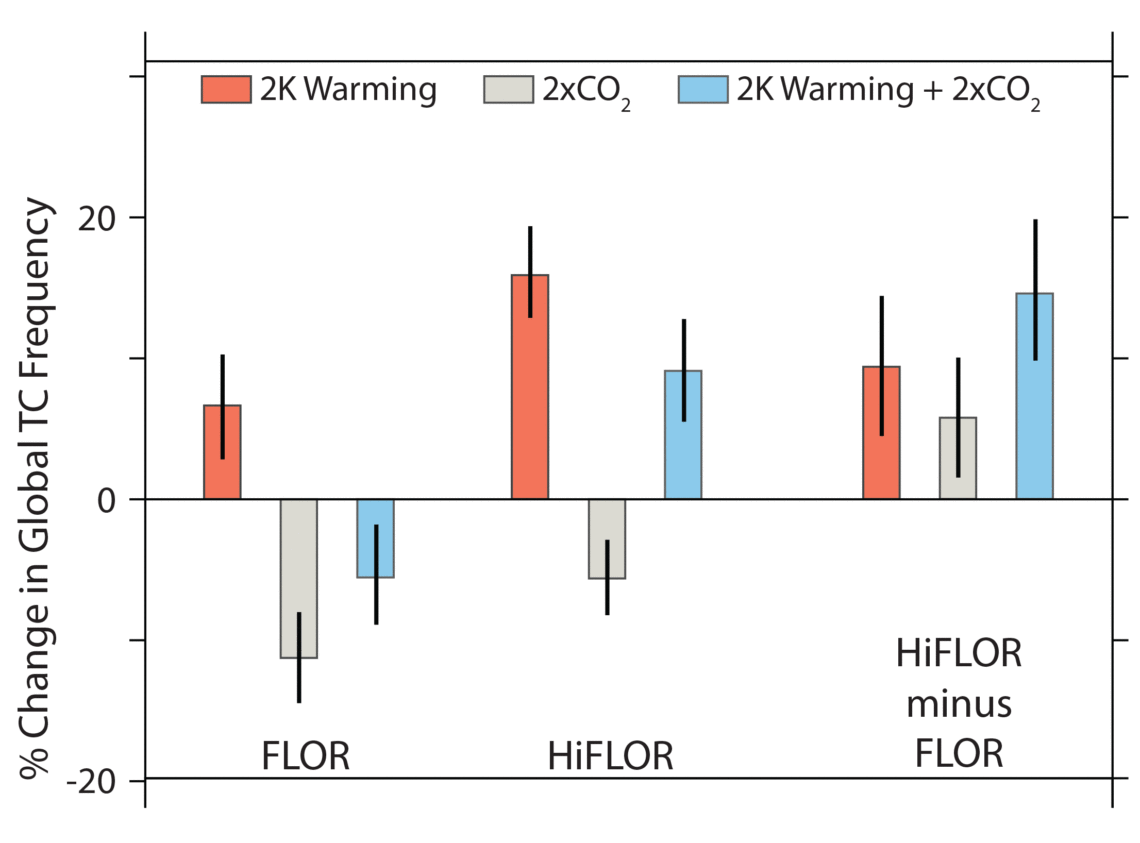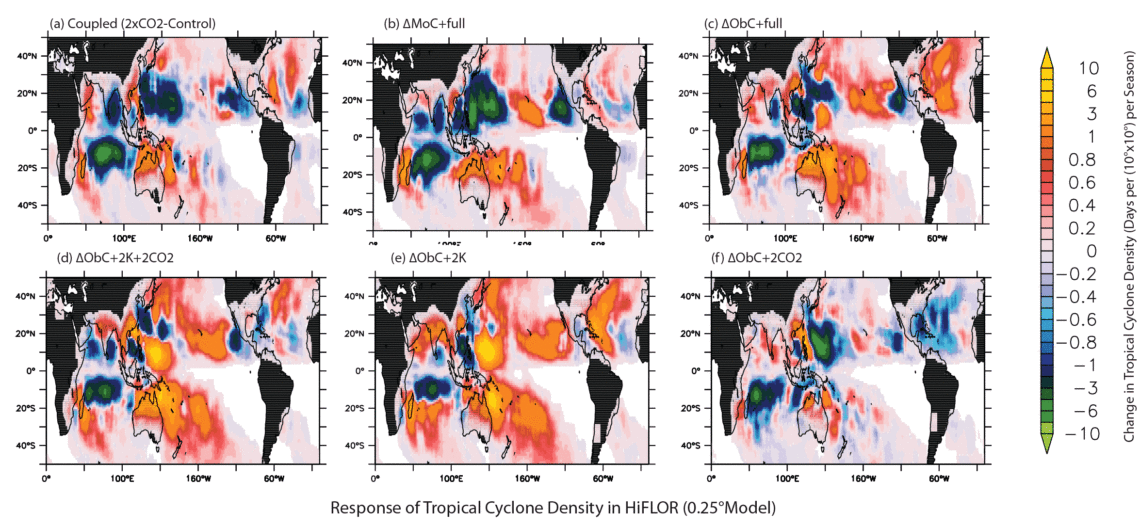August 16th, 2019
Key Findings
- Higher resolution coupled models (comparing 2 degree, 0.5 degree and 0.25 degree ) have slower surface warming due to greater Southern Ocean heat uptake.
- Increased CO2 and warming drive a substantial decrease in global tropical cyclone (TC) frequency in the 0.5 degree model, but either no change or an increase in the 0.25 degree model (depending on whether or not that model’s climatological SST biases are corrected).
- The 0.25 degree model shows a substantial increase in TC intensity and Category 3-5 TC frequency. This model is unique in projecting an increase in global TC frequency in a warming climate, whereas most of the climate models in the world show a decrease.
- Projected changes in small scale disturbances (i.e., TC seeds) are an important driver for TC frequency changes in these models.
G. Vecchi, T. Delworth, H. Murakami, S. Underwood, A. Wittenberg, F. Zeng, W. Zhang, K. Bhatia, W. Cooke, J. He, A. Rosati, K. van der Weil, W. Anderson, V. Balaji, J. Baldwin, J-H Chen, K. Dixon, R. Gudgel, L. Harris, L. Jia, N. Johnson, S. Kapnick, T. Knutson, S-J Lin, M. Liu, J. Ng, J. Smith, G. Villarini, X. Yang. Climate Dynamics. DOI: 10.1007/s00382-019-04913-y
This research explored the sensitivity of large-scale surface climate and tropical cyclone activity to a doubling of CO2, using three coupled global climate models that span a range of horizontal atmospheric and land resolutions. The authors investigated the impact of resolution changes in the atmosphere within a family of coupled global climate models with identical ocean and sea ice components, and whose atmospheric configurations differ only in their horizontal resolution (~200km, ~50km, and ~25km).
The models used for these experiments are derived from GFDL’s coupled models CM 2.1 and CM 2.5: the Low Ocean Atmosphere Resolution version of CM2.5 (LOAR); the Forecast-oriented Low Ocean Resolution version of CM2.5 (FLOR); and the high atmospheric resolution version of FLOR (HiFLOR), with, respectively, resolutions of ~200km, ~50km, and ~25km.
In these experiments, the models exhibited similar changes in background climate fields thought to regulate TC activity, such as relative sea surface temperature (SST), potential intensity, and wind shear. However, global TC frequency decreased substantially in the 50km model, while the 25km model showed no significant change. The inconsistent changes in TC frequency is explained by different changes in frequency of synoptic disturbances (i.e., TC seeds). The 25km model also had a substantial increase of Category 3-4-5 hurricanes.
Idealized perturbation experiments were performed to understand the TC response. Each model’s response to SST forcing depends on each model’s background climatological SST biases: removing these biases leads to a global TC intensity increase in the ~50km model, and a global TC frequency increase in the ~25km model (HiFLOR), in response to CO2-induced warming patterns and CO2 doubling. The highly unusual response of HiFLOR for global TC frequency is somewhat surprising and appears unique among climate models. This remains an uncertain finding and will be subject to further studies and follow-on studies with other high resolution models.
TCs and surface climatological changes can cause large societal and ecological impacts. It is important to increase our understanding of how these will change in the future, with higher atmospheric CO2 levels caused by further anthropogenic emissions.




